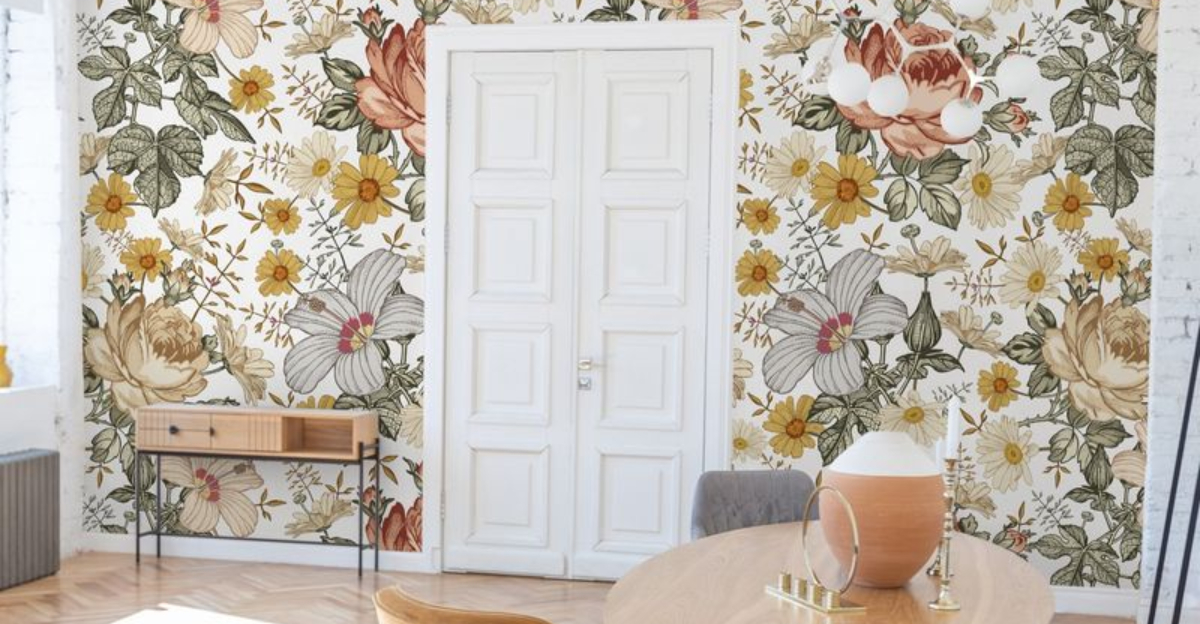Remember those design choices we once swore by, only to cringe at years later? Home decor, like fashion, goes through cycles of popularity.
Some outdated trends manage to maintain their charm despite falling out of favor, while others make us wonder what we were thinking. Let’s explore which retro design elements still deserve a place in our homes and which ones should stay firmly in the past.
1. Shag Rugs
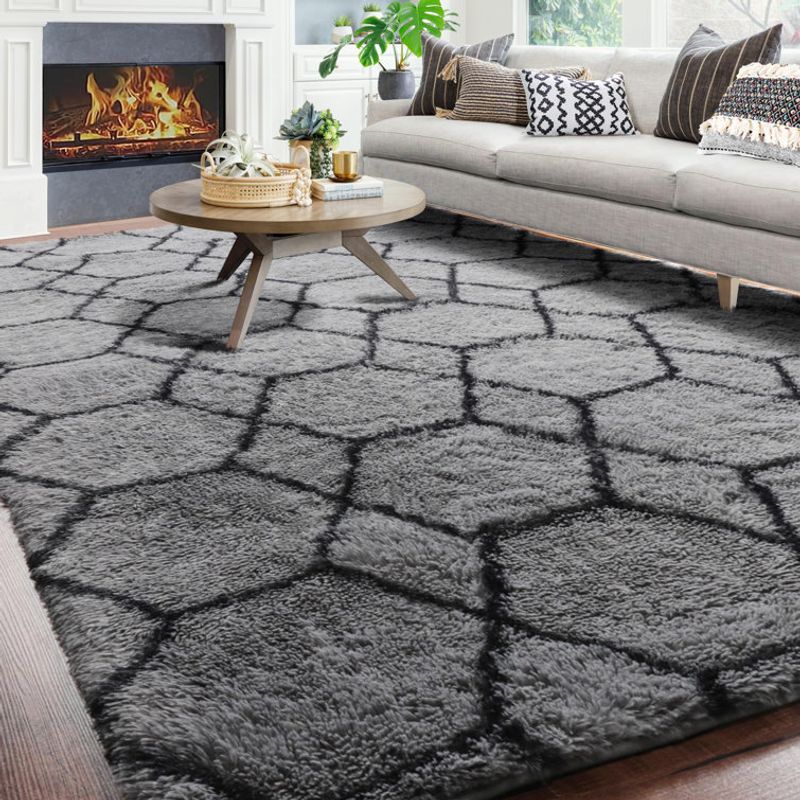
Once the hallmark of 1970s homes, these plush floor coverings have made a surprising comeback. Their luxurious texture adds warmth and comfort underfoot, especially in minimalist spaces needing a touch of coziness.
Modern versions come in subdued colors rather than the psychedelic hues of yesteryear, making them versatile for contemporary interiors. Paired with sleek furniture, they create a delightful textural contrast.
2. Popcorn Ceilings (When Painted White)
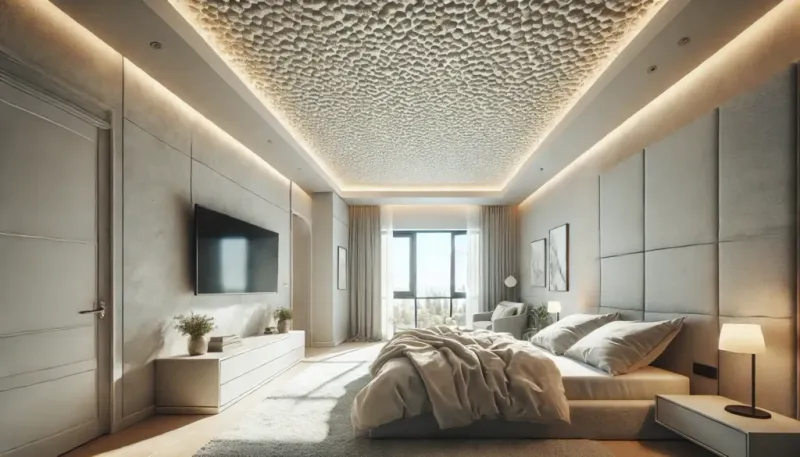
Believe it or not, these textured ceilings can actually work in certain spaces! When freshly painted white, they diffuse light beautifully throughout a room and add subtle dimension overhead.
Many homeowners appreciate how they dampen sound, especially in apartments or busy households. Rather than spending thousands to remove them, a simple coat of quality ceiling paint can transform these textured surfaces into an acceptable design element.
3. Lace Curtains
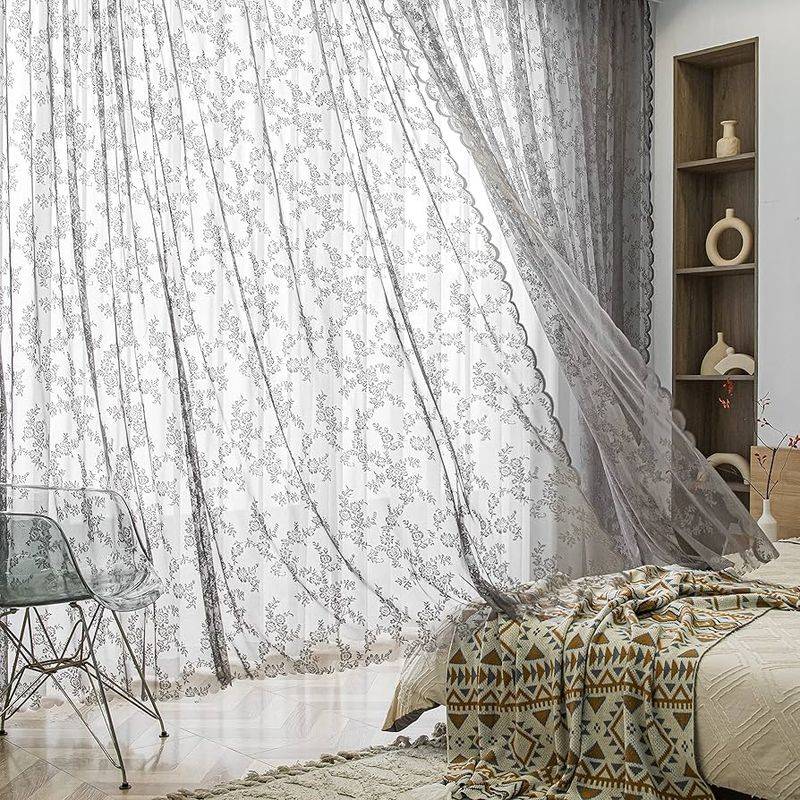
Grandma’s favorite window treatment holds surprising staying power when styled correctly. These delicate coverings filter sunlight beautifully, creating a soft, dreamy atmosphere while maintaining privacy.
Vintage-inspired homes benefit from their romantic charm, especially when paired with more contemporary elements. The key is choosing simpler patterns rather than overly ornate designs, allowing them to complement rather than overwhelm your space.
4. Wood Paneling (If It’s Real and Well-maintained)
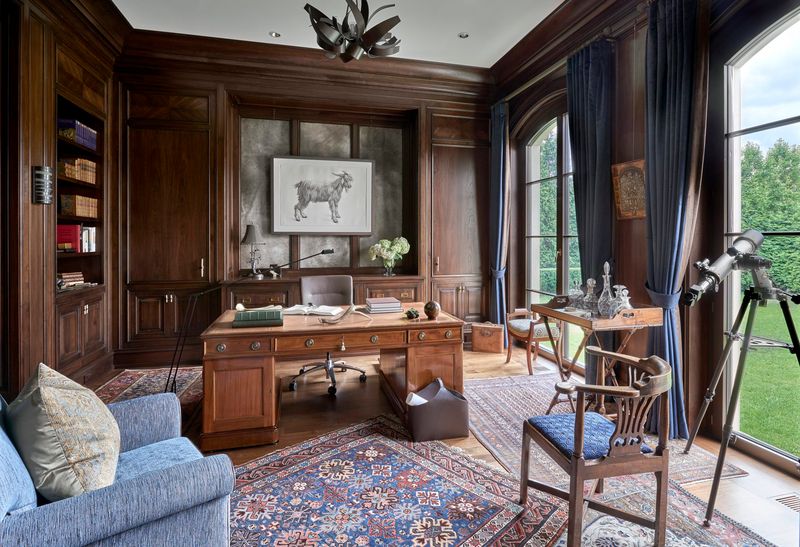
Forget those flimsy, fake-wood sheets from the 1970s! Authentic wood paneling, when properly maintained, adds undeniable warmth and character to any space.
The rich tones and natural grain patterns create a cozy atmosphere that’s impossible to replicate with paint alone. Many high-end designers are embracing this look again, especially in studies, libraries, and spaces where a touch of traditional elegance is desired.
5. Vintage Floral Wallpaper
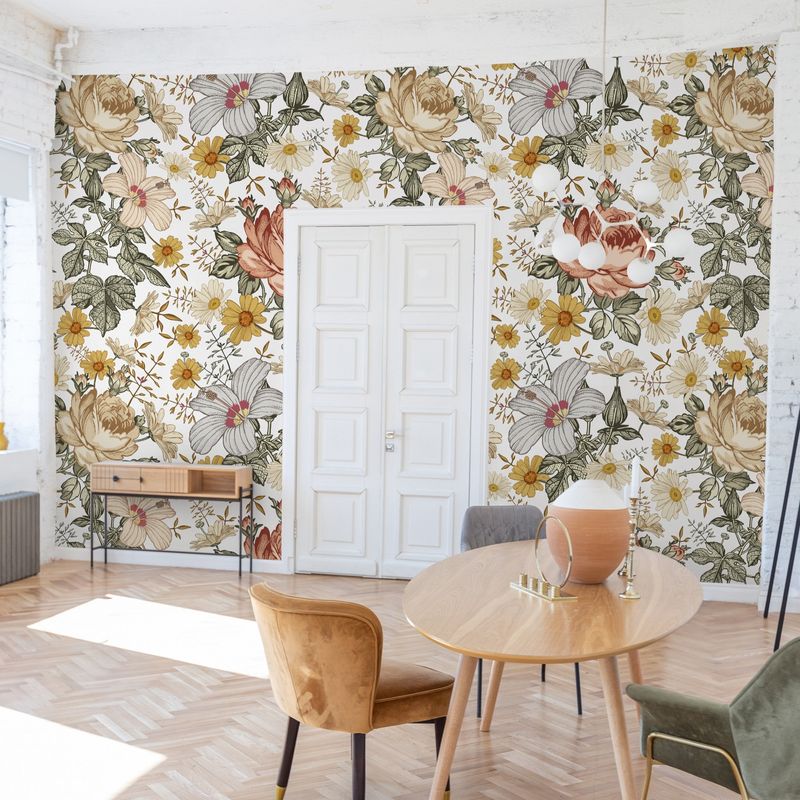
Florals never truly fade away—they just bloom differently with each decade! Today’s approach uses vintage floral patterns as statement walls rather than covering entire rooms.
When balanced with solid colors and contemporary furniture, these botanical prints add personality and unexpected charm. The secret lies in choosing the right scale: small, delicate patterns for calm spaces, or bold, oversized blooms for dramatic impact.
6. Brass Hardware
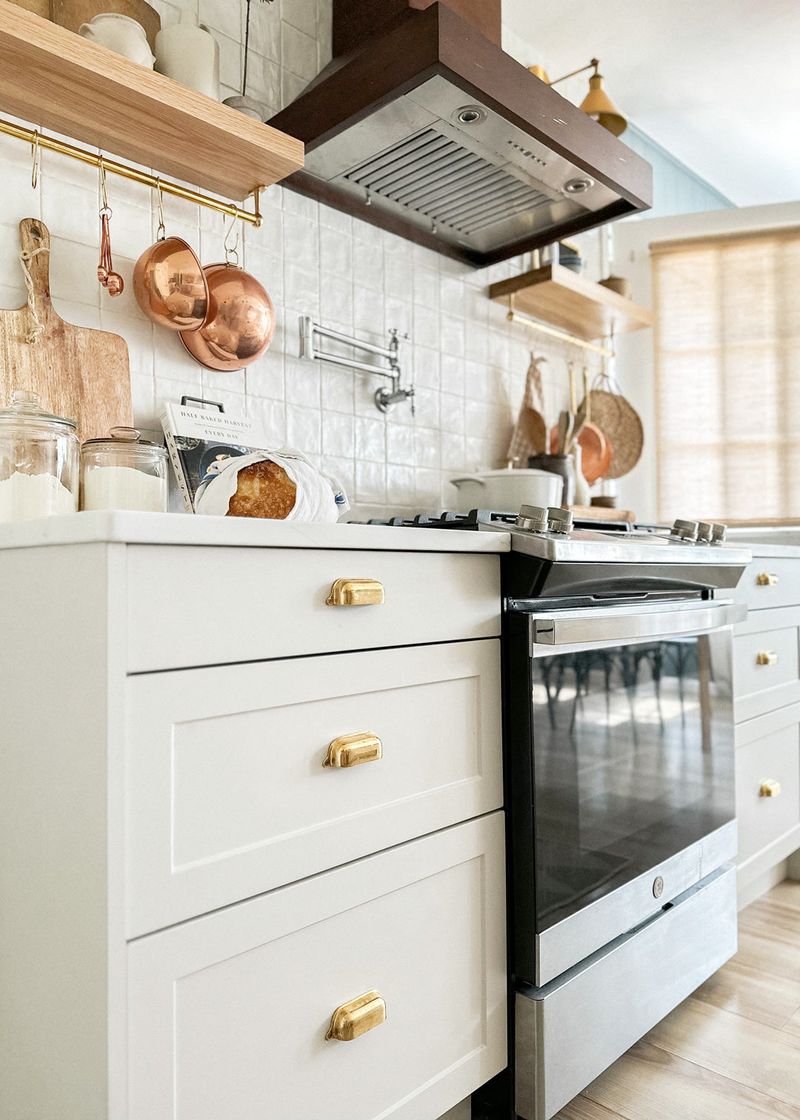
What goes around comes around! After years of chrome and nickel dominance, warm metallic finishes have reclaimed their throne in home design.
Today’s brass fixtures feature less shine and more sophisticated patina than their 80s counterparts. This golden-hued metal adds warmth to kitchens and bathrooms, especially when paired with cooler tones like blues and greens. Unlacquered brass that develops a living finish over time is particularly coveted.
7. Ruffled Bed Skirts
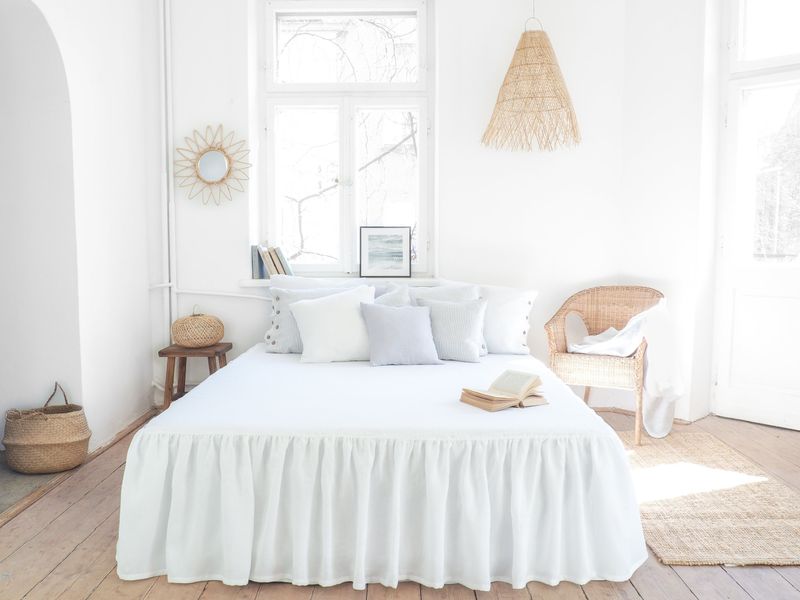
Surprisingly, these frilly bed accessories can look charming when styled thoughtfully! In farmhouse or cottage-inspired bedrooms, a simple ruffled skirt adds a touch of softness and traditional comfort.
The trick is keeping the ruffle modest rather than exaggerated, and pairing it with more streamlined bedding. White or natural linen versions offer timeless appeal without the fussy look of heavily patterned varieties popular in decades past.
8. Colored Bathroom Sinks

Remember those pastel pink and mint green bathroom fixtures? When embraced intentionally, these colorful pieces can become charming focal points in vintage-inspired bathrooms.
Paired with modern elements like frameless mirrors and contemporary lighting, a colored sink transforms from outdated to deliberately retro. Designers now seek these vintage pieces for their unique character and quality craftsmanship that’s rarely found in newer products.
9. Matching Furniture Sets (In Moderation)
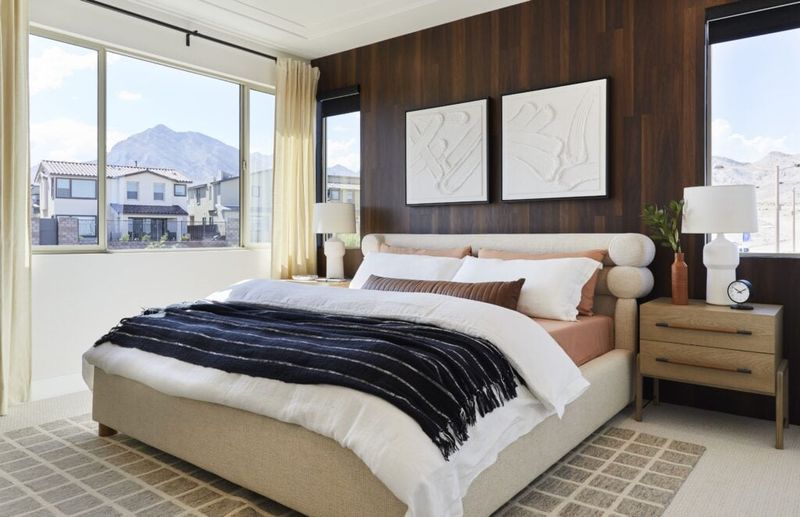
While the design world champions eclectic mixing, there’s something refreshingly cohesive about thoughtfully matched pieces. The key difference from decades past? Moderation.
Instead of outfitting an entire room with identical items, today’s approach might pair matching nightstands with a coordinating bed frame. This creates visual harmony while avoiding the showroom-floor look that dominated 1990s homes. Quality craftsmanship makes all the difference here.
10. Tiled Countertops (When Well-preserved)
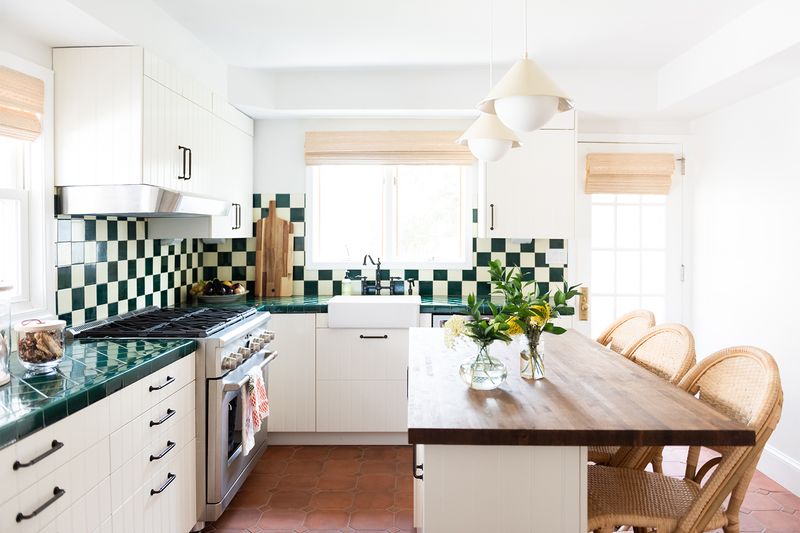
Hear me out—those square-tiled kitchen counters can actually look intentionally charming in the right setting! In cottage-style or Spanish-inspired homes, well-maintained tile countertops add authentic character that brand-new materials simply can’t match.
Fresh grout, quality sealing, and thoughtful color choices make all the difference. People appreciate their heat resistance and the ability to replace individual tiles if damaged—practical benefits alongside their retro appeal.
11. Wall Decals with Inspirational Quotes
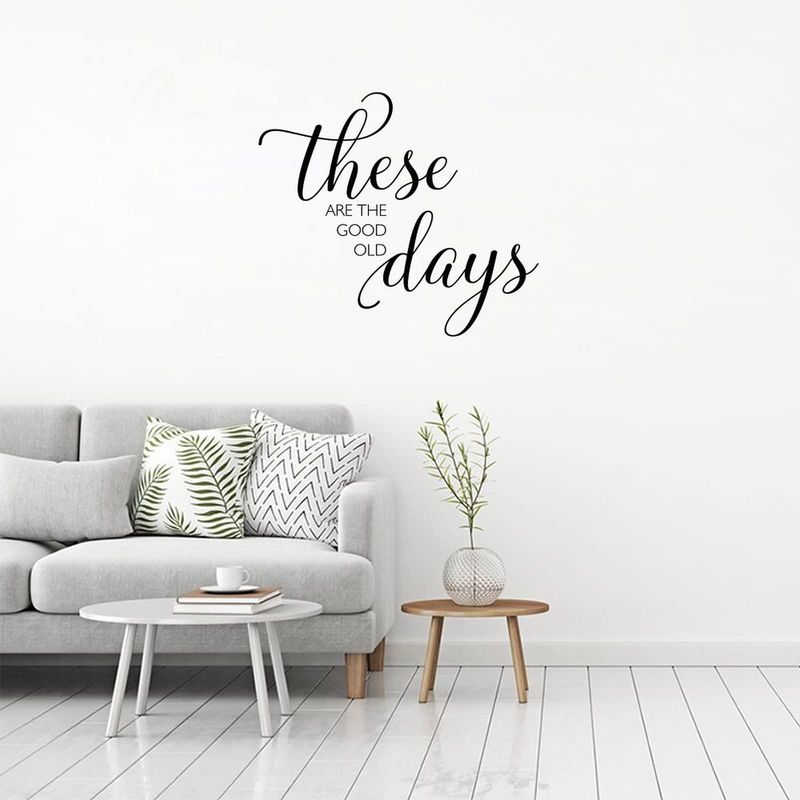
Nothing dates a home faster than vinyl lettering proclaiming “Live, Laugh, Love” across the living room wall. These mass-produced motivational messages peaked in the 2010s and quickly became design clichés.
Beyond their ubiquity, these decals often appear disconnected from the rest of the décor. If you love meaningful text, consider framed calligraphy or vintage signage instead—pieces with authentic character rather than mass-produced sentiments.
12. Fake Ivy Above Cabinets
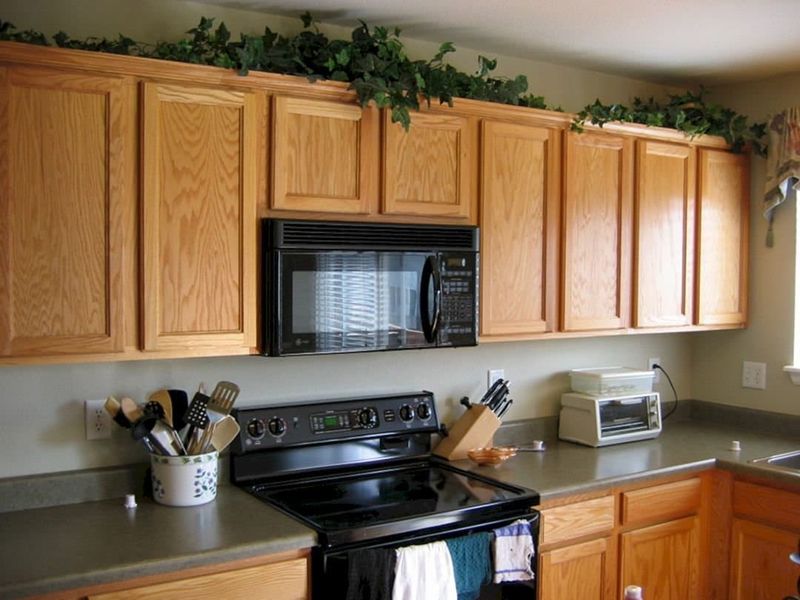
Gathering dust in countless kitchens, artificial greenery strewn across cabinet tops remains one of design’s most persistent faux pas. These plastic plants collect grime while fooling absolutely no one about their authenticity.
The awkward space above cabinets presents a genuine design challenge, but dusty fake foliage isn’t the solution. Consider leaving this area empty for a cleaner look, or display a few meaningful objects that can be easily cleaned and don’t attempt to mimic living things.
13. Plastic Slipcovers
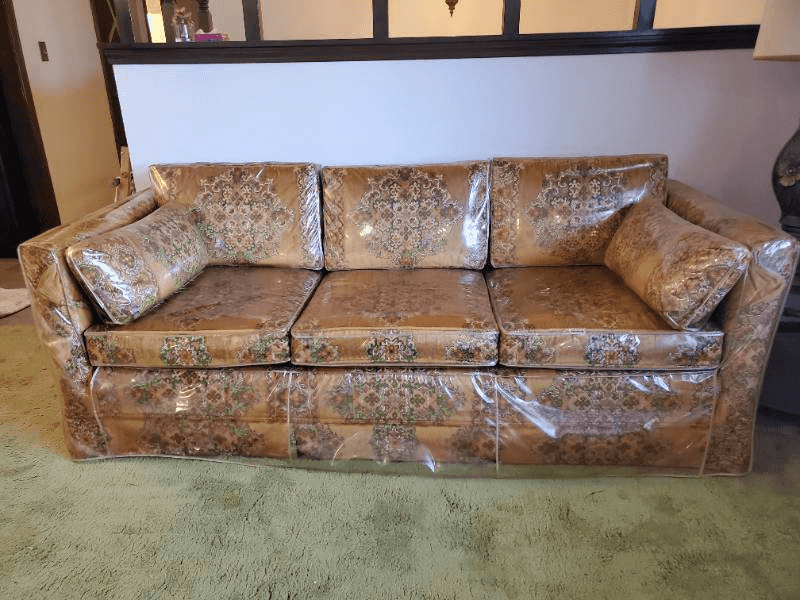
Ah, the distinctive sound of peeling yourself off a plastic-covered sofa on a hot summer day! While our grandparents embraced these transparent furniture protectors for practical reasons, they’ve never managed to look anything but awkward.
Beyond their uncomfortable feel, plastic covers create a unwelcoming atmosphere that contradicts the very purpose of living spaces. Today’s performance fabrics offer stain resistance without sacrificing comfort or style—making plastic covers thoroughly unnecessary.
14. Faux Finish Sponge-Painted Walls
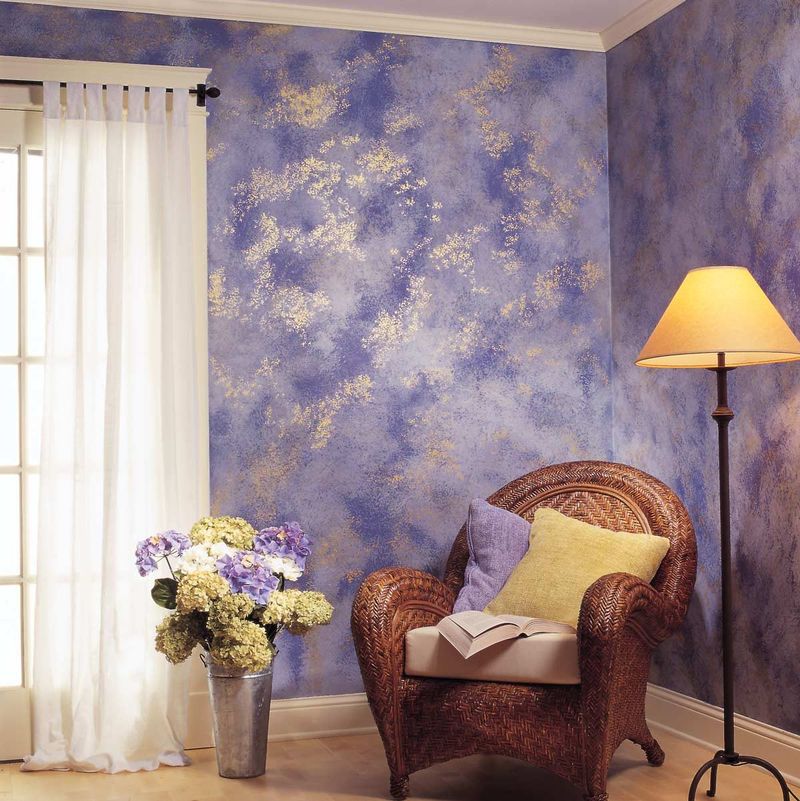
Remember those sponge-painted walls in terracotta and mustard hues? This labor-intensive technique was once considered sophisticated but now reads as distinctly dated and busy.
The uneven texture and multiple color layers that defined 1990s walls now make spaces feel smaller and more chaotic. Modern interiors favor cleaner approaches to adding interest—like a single accent wall in a bold color or tasteful wallpaper that doesn’t compete with the room’s other elements.
15. Inflatable Furniture
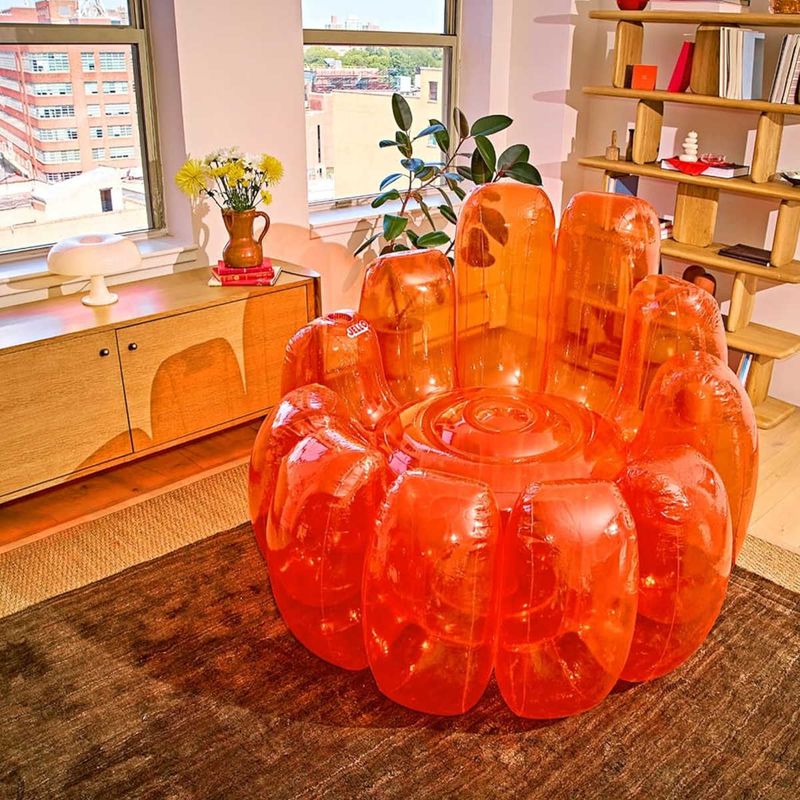
Nothing says “temporary college apartment” quite like blow-up chairs and sofas. This Y2K-era trend attempted to merge playfulness with functionality but delivered on neither promise.
These air-filled pieces offer minimal support and constantly lose pressure. They’re prone to punctures and typically made from materials that feel sticky against skin. Even in the most casual spaces, actual furniture provides comfort and stability that inflatable alternatives simply can’t match.

